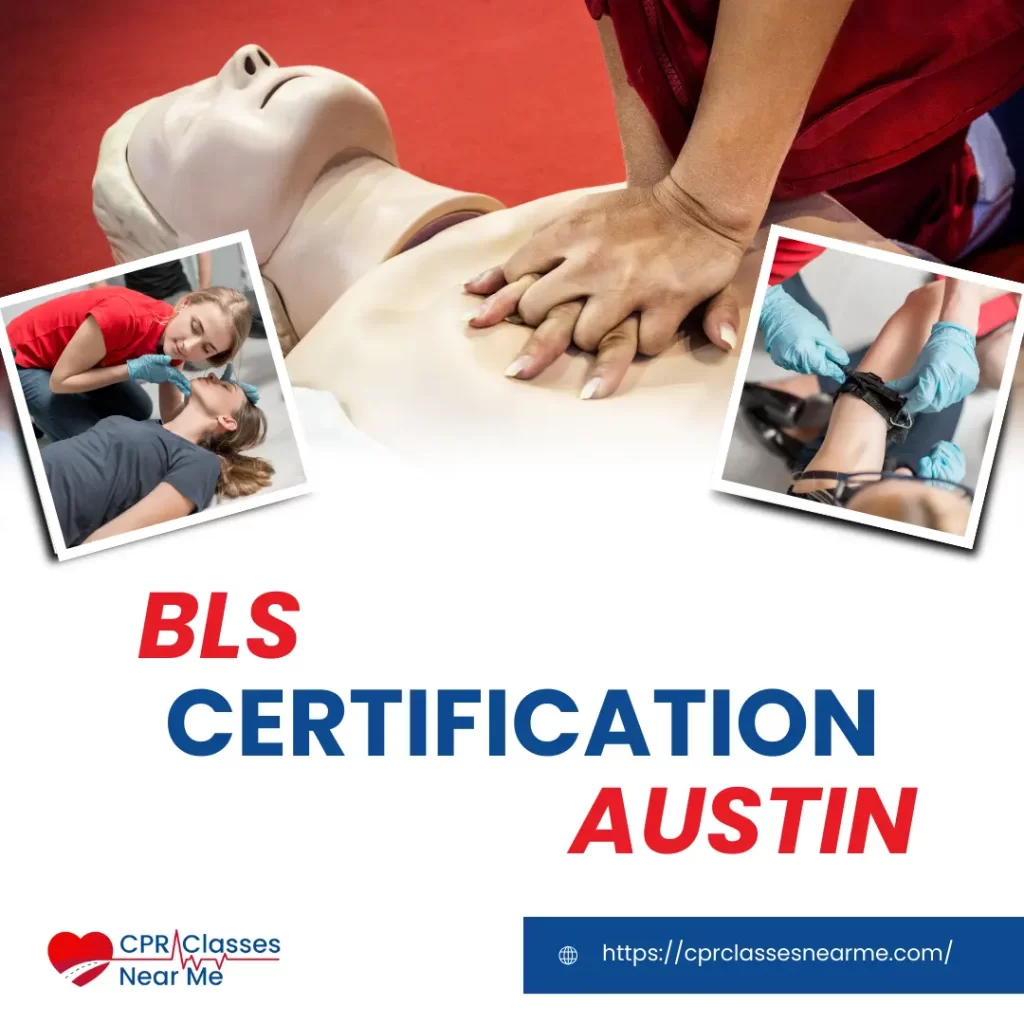
If you’re looking for BLS certification Austin, you’re taking an important step in learning how to save lives. This guide will explain what you can expect from a BLS certification course, including the course content, hands-on training, and the certification process.
BLS certification Austin courses are designed to teach you essential life-saving skills. Here’s what the course typically covers
They learn foundational principles and protocols essential for administering immediate care in life-threatening situations, emphasizing rapid assessment, effective communication, and decisive action. This foundational knowledge forms the bedrock upon which practical skills are built, ensuring readiness to intervene effectively during emergencies.
Key elements include the prompt recognition of cardiac arrest signs, immediate initiation of CPR (Cardiopulmonary Resuscitation), swift deployment of defibrillation (AED), proficient delivery of advanced life support, and comprehensive post-cardiac arrest care. Understanding and mastering each link in this chain is crucial for effectively responding to emergencies and improving patient outcomes.
Understanding these differences is crucial as it allows responders to adapt their approach based on the patient’s age and physical needs, thereby optimizing their ability to intervene effectively and stabilize the patient’s state until professional medical help arrives.
Hands-on training is a vital part of Austin BLS certification classes. Here’s what you’ll experience:
The certification process for AHA BLS certification Austin involves both a written exam and a practical skills test. Here’s what you need to know:
Renewing your BLS certification is important to keep your skills up-to-date. Typically, BLS certification Austin is valid for two years. Following this period, it will be necessary for you to complete a recertification course. This renewal process ensures that you remain proficient in the latest BLS techniques and guidelines.
For healthcare professionals, AHA BLS certification Austin is often a requirement. It ensures that nurses, doctors, and other medical staff are prepared to handle cardiac emergencies efficiently. Having BLS certification demonstrates your commitment to providing high-quality care and can be a critical factor in saving lives.
The cost of Austin BLS certification classes can vary depending on the provider. Typically, you can expect to pay between $50 to $100 for the course. This fee usually includes the cost of the training materials and the certification exam. Some employers may cover the cost of BLS certification for their employees, so it’s worth checking with your workplace.
Getting your BLS CPR certification in Austin is a valuable step in being prepared to handle emergencies. The course covers essential topics like CPR, AED use, and choking relief, with plenty of hands-on practice to ensure you’re ready for real-life situations. By understanding the course content, hands-on training, and certification process, you’ll be well-prepared to make a difference in critical moments. If you’re interested in Austin BLS certification classes, start your journey today and gain the skills that could save lives. For more information about AHA BLS certification Austin, check out our local classes and training centers at CPR Classes Near Me Austin to find the right course for you.